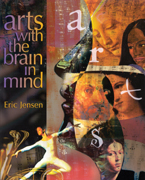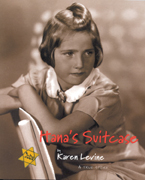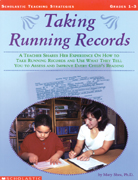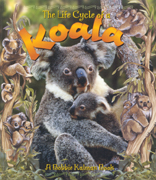|
Reviewers
Wanted
Interested
in the latest books, reference & resource materials for teachers
and students?
Professionally
Speaking is expanding its roster of reviewers for books, software,
CDs & other resource materials
As
a PS reviewer, you will:
- receive
notification of recent releases
- volunteer
to review materials of particular interest
- reflect
on and share your reactions
- keep
your copy of the item reviewed
- Share
your interest & opinions with colleagues throughout Ontario
(and beyond)
To
offer your services provide:
- full
name
- current
position, grade level(s)
- subject
category(ies)
- field(s)
of interest
- home
and work addresses and telephone numbers
- email
address
To:
Rosemary Kennedy, Reviews Editor
121 Bloor Street East
Toronto, ON M4W 3M5
T 416-961-8800 ext. 623
E rkennedy@oct.ca
|
OISE
Study Urges More Teacher Support
By Lois
Browne
OISE/UT’s look
into the present state of the public school system in Ontario and recommendations
for how to develop the schools we need places a strong emphasis on greater
support and collaboration with teachers.
Teaching "just
has to be a more attractive profession," says Ken Leithwood, Associate
Dean of Research at the Ontario Institute for Studies in Education of
the University of Toronto and one of the principal authors of The Schools
We Need.
Leithwood with his
fellow researchers, Michael Fullan, Dean, and Nancy Watson, Senior Ressearch
Associate at OISE, released the results of their study on the effect of
prevailing education policies on Ontario’s public education system
in February for public dialogue and feedback. The final version, with
recommendations for change, was released in April.
Leithwood and his
colleagues were concerned about the direction of the school system over
the past five or six years and "with funding by the Atkinson Foundation,
we had an opportunity to engage a large number of people in thinking about
a possible and productive direction for the future."
The study suggests
that a range of measures is necessary to improve matters. Recruiting new
students to teacher education programs is one. This doesn’t seem
to be a problem at the moment. "You can draw that conclusion just
by looking at the numbers of people wanting to get into the faculties
of education." But, he adds, the researchers have seen other jurisdictions
where the kinds of working conditions and morale that teachers in Ontario
are now facing have eroded interest. He suggests that teaching has become
a much less attractive option and it shows in the quality of the candidates
for teacher education.
"I guess our
worry starts with what applicants will look like in the long run if we
continue as we are at the present time."
The study points out
that education reform fails badly when it discounts the vital role of
the teacher. Targeting curriculum, assessment and graduation requirements
for improvement doesn’t make much difference unless there is attention
to the development of teaching capacity.
The study looks at
two reforms introduced by the Ontario government which were intended to
improve teaching. First, the entry-to-the-profession test was deemed redundant
for teachers just coming out of a teacher education program. Research
about its value in other jurisdictions suggests it is a waste of time.
Second, the study found that, in principle, a program of mandatory professional
learning has promise.
The final report recommends,
however, that the pronvincial government work with the Collge to ensure
the Professional Learning program stimulates professional growth over
a teacher’s entire career and to reduce associated bureaucracy.
He believes that the
mandatory nature of the PLP is not a problem as long as it is sensible,
well-designed and actually adds to teaching capacity. But he says that
the current education policy puts a lot of pressure and demands on teachers
without the resources they need to fulfill expectations.
"We’ve been
influenced a little by recent experience in UK where the policy is one
of high pressure and high support and we’ve seen some impressive
things happen as a result of that."
He notes that there
have been impressive achievements in teaching maths and languages in the
UK. Teachers have been under pressure to develop classroom methods that
are much tighter, more active and involve more direct intervention with
children. But they have also, he says, been given "an enormous amount
of support and encouragement. And that costs money."
"There’s
a massive amount of literature now on what can be done to improve schools,"
he says. "And you can pretty much conclude that any method with evidence
to show it will make a difference does cost money. The notion that you
can get more for less just doesn’t cut it."
The study also points
to the lack of consultation by government policy makers with other education
stakeholders.
"We express a
particular concern in the report about using the evidence of sound research
as the basis for education policy. That’s one instance where more
consultation with the university would be useful. But teachers’ federations,
the universities and administrators associations have been consulted less
than they were in the past," he says.
This OISE study was
not based on original data. The team drew evidence from available research.
They also engaged in a number of projects with teachers that provided
an informal source of evidence about the effects of current education
policies in the province. Teaching was not the sole focus of the study.
Recommendations outline a number of key conditions necessary to the schools
that Ontario needs:
- a vision of a strong
public school system with a coherent set ofpolicies that will fulfill
the vision
- policies based
on evidence-based research
- a shift of some
discretionary power to districts and schools
- flexibility in
monitoring policy implementation and make changes where necessary and
adequate
- flexible funding.
They were pleased
with the feedback they received from teachers, education organizations
and the general public. A lot of comment came from people with a direct
interest in schools, but the study’s web site also brought in comment
from other parts of Canada and from other countries.
"There were literally
thousands of copies of the report downloaded and we have a comment section
that was used pretty liberally. We have summarized what we learned from
this in our final report and refer to some of the feedback throughout
our recommendations."
Support for the recommendations
was overwhelming. "There were a small number of individuals and groups
who said ‘you’re wrong, we think the government’s done
a good job of whipping the teaching force back into shape,’ but not
very many."
Still, Leithwood is
not confident that the current government will incorporate the study’s
recommendations into education policy.
"There’ve
been signs that there’s more openness to consultation now,"
he says. "In fact, I think the literacy and numeracy strategies that
the government launched in the past year are one of the best things to
have come out of the ministry in a while. But still, it’s hard to
see real follow through on some of the proposed initiatives that we think
are important."
To access a copy of
The Schools We Need, visit the study’s web site at http://schoolsweneed.oise.utoronto.ca.
Resources
Arts
with the brain in mind
By Eric Jensen
Reviewed
by Mary Hookey
 Arts
with the brain in mind is a practical research-based book that explores
the value of the arts for enhancing learning. Jensen, a well-known educational
consultant and author, organized his research around three questions: Arts
with the brain in mind is a practical research-based book that explores
the value of the arts for enhancing learning. Jensen, a well-known educational
consultant and author, organized his research around three questions:
- How do the arts
stack up as a major discipline?
- What is their effect
on the brain, learning and human development?
- How might schools
best implement and assess an arts program?
and concluded that
educators should make the arts a core part of the basic curriculum.
Jensen’s perspective
on arts education is interesting because he links himself to educators
who do not call themselves arts advocates – beginning his book with
an explanation of why he was not an arts advocate. He outlines how his
exploration has led him to advocate arts in the basic curriculum as a
means for improving education.
He now argues that
arts experiences are valuable not only as strategies for learning or as
subjects in themselves, but also as a basic requirement for developing
as human beings.
In his opinion, "arts
are not only fundamental to success in our demanding, highly technical,
fast-moving world, but they are what makes us most human, most complete
as people."
Initially, Jensen
was intrigued by arguments of advocates for arts-based education that
offered multiple approaches and strategies for learning. arts with the
brain in mind is his story of examining the evidence behind those arguments.
The book provides us with a rich details about education in and through
the arts.
His labelling of the
disciplines within the arts include music and visual arts and movement
arts. The latter extends well beyond dance to physical activities including
games, sports, auto mechanics and martial arts.
The evidence he presents
shows that well-taught and consistent arts programs can promote skills
and understanding not only in the arts, but also develop other values:
integrity, wonder, truth, flexibility, fairness, dignity, contribution,
justice, creativity and co-operation.
Jensen provides evidence
for effects of the arts in the curriculum on student motivation to learn
as well as on their creativity, cultural awareness and ability to co-operate.
The book is filled
with practical suggestions for implemention. The 118 pages of text include
a 14-page resource list that should be invaluable to any educator interested
in the effects and practical aspects of arts education.
Arts with the brain
in mind. Alexandria, VA, 2001; ISBN 0-87120-514-9; softcover, 139
pages, $22.95 (U.S.); Association for Supervision and Curriculum Development,
Toll-free from U.S. and Canada:
1-800-933-2723, www.ascd.org/
Mary Hookey is
a retired associate professor at the faculty of education, NipissingUniversity.
 Hana’s
Suitcase Hana’s
Suitcase
By Karen Levine
Reviewed
by Brenda Dillon
Hana’s Suitcase
is the third title in the Holocaust Remembrance Series for Young Readers,
published by Second Story Press. It is the true story of the search for
Hana, a child whose suitcase became part of an exhibit at a children’s
Holocaust education centre in Tokyo, Japan.
Fumiko Ishioka, the
centre’s curator, hoped to teach Japanese children about the Holocaust
through a display of artifacts that had belonged to children who died
in the Holocaust. One of the items she included was a suitcase, identified
as the property of Hana Brady, an orphan, born May 16, 1931. The children
who visited the centre wanted to know about Hana, so the curator promised
to investigate and, with perseverance, eventually found answers.
Hana had died in Auschwitz
in 1944. Her older brother George had survived and was living in Toronto.
Hana’s Suitcase tells two stories – the story of Hana’s
life and the story of Fumiko Ishioka’s efforts to learn about the
owner of the suitcase.
Teachers looking for
Holocaust education materials will find Hana’s story, and George’s
reaction to Ishioka’s letter, poignant. Teachers and teacher-librarians
should, of course, read this book before using it with students and should
be prepared to help students deal with their emotional reactions to Hana’s
story.
Hana’s Suitcase
was a finalist for the 2002 Norma Fleck Award for Canadian Children’s
non-fiction, nominated for the 2002 Governor-General’s Award, and
chosen as one of the titles for the 2002 Silver Birch Awards and the new
Golden Oak Awards for adult literacy learners.
The book is based
on an award-winning documentary Karen Levine produced for CBC Radio’s
The Sunday Edition, first broadcast in January 2001. This documentary
is available online at www.radio.cbc.ca/programs/thismorning/sites/people/hanassuitcase_010119/hana_main.html.
The book is available
alone or with a CD of this documentary.
Hana’s Suitcase.
Toronto: Second Story Press, 2002. ISBN: 1-896764-55-X; softcover, 111
pages, $14.95; phone: 416-537-7850; fax: 416-537-0588; website: www.secondstorypress.on.ca;
e-mail: sales@secondstorypress.on.ca
Brenda Dillon is
the teacher-librarian at Philip Pocock Catholic Secondary School, Dufferin-Peel
Catholic District School Board.
 Taking
Running Records Taking
Running Records
By Mary Shea
Le
sondage d’observation en lecture-écriture
By Marie M. Clay
Reviewed by Helen
Donohoe
Taking "running
records" of student levels of achievement in reading is becoming
standard practice in some school boards. Devised by New Zealand educator/researcher
Marie Clay, running records can initially take a bit of getting used to,
but two recent reference works – one in English and one in French
– help clarify the process for the classroom teacher and learning
resource teacher.
In the Scholastic
Teaching Strategies series, Taking Running Records American author
Mary Shea offers her expertise as she explains Clay’s methodology
in meticulous detail. Every syllable the student reads is coded and recorded.
The reproducible assessment forms and graphic organizers (for example,
outlines for narrative readings and rubrics for story retelling) match
closely the expectations in the Ontario curriculum.
Le sondage d’observation
en lecture-écriture in the Cheneliere/Didactique series is
the French version (produced in Nova Scotia) of the body of works of Marie
Clay. The comprehensive nature of this text combines Clay’s philosophy
with the many varied graphic organizers in French, a valuable res-ource
indeed in bothFrench-language and French immersionschools, saving a great
deal of translation time for teachers.
Both works are topical:
in tandem, (where applicable), they would be an appropriate investment
for the professional reference section of the school library.
Taking Running
Records; New York, 2000, ISBN 0-439-07752-4; softcover, 128 pages,
$14.95 (U.S.); Scholastic Distribution Centre 573-636-5271; www.scholastic.com.
Le sondage d’observation
en lecture-écriture; Montréal, 2002; ISBN 2-89461-807-7;
softcover, 142 pages; Chenelière-McGraw-Hill; 514-273-1066; fax
514-276-0324.
Helen Donohoe teaches
at Sanford Avenue School in Hamilton.
 The
Life Cycle Series The
Life Cycle Series
By Bobby Kalman
Reviewed
by Andrea Murik
This informative,
non-fiction series would be an excellent addition to any school or classroom
library. Each of the 10 current books provides well-researched information
and illustrations on a particular mammal, bird, insect or plant. Children
will be eager to use these books for projects on animal habitats or ecosystems.
Each book begins with
the classification of the featured animal, followed by information about
the animal’s life cycle, life span, habitat, food and mating rituals.
The author also includes related environmental concerns and tips as well
as stories and myths. Some titles include a list of conservation and other
web sites.
This is a visually
appealing, well-written series with a range of information to engage young
researchers.
The Life Cycle
Series; St. Catharines, 2002; Included in the series: Bird, Butterfly,
Frog, Koala, Lion, Sea Turtle, Spider, Tree, Whale, Wolf. Each book is
32 pages and is available in both soft and hardcover. Softcover is $7.16;
hardcover, $19.16. For ISBN information please go to the library
pages on the College web site.
Andrea Murik is
a special education resource teacher, Angus Morrison E.S.,Simcoe County
District School Board.
 "All
the Stories That We Have": Adolescents Insights About Literacy and
Learning in Secondary Schools "All
the Stories That We Have": Adolescents Insights About Literacy and
Learning in Secondary Schools
By Elizabeth Birr Moje
Reviewed
by Brenda Dillon
"All the Stories
That We Have": Adolescents’ Insights About Literacy and Learning
in Secondary Schools combines the stories of eight students with practical
information to provide teachers with a socio-cultural perspective on student
learning, including emotional, affective and cognitive development. Moje’s
point is that the voices of students must be considered when teachers
make instructional decisions.
Moje invites teachers
to reflect on their philosophy and practice of teaching with her personal,
accessible approach. The book deals with content-area literacy –
helping teachers to understand adolescent learners.
"All the Stories
That We Have": Adolescents’ Insights About Literacy and Learning
in Secondary Schools (Kids InSight Series). International Reading
Association, 2000. ISBN: 1-87207-264-9; softcover, 189 pages, $31.90;
in Canada, contact the Ontario Library Association Store, phone 416-363-3388,
toll free 1-866-873-9867; fax 416-941-9581, toll free 1-800-387-1181;
e-mail publications@accessola.com;
web site www.accessola.org.
Brenda Dillon is
the teacher-librarian at Philip Pocock Catholic Secondary School, Dufferin-Peel
Catholic District School Board.
Science
Comes to Life
Previewed by Kerry Walford
Discover the amazing
world of art and play at the Waterloo Regional Children’s Museum
in Kitchener. The museum opens September 27 and will be a year-round attraction.
Tinker with the Mechanical
City. Learn about the region’s water system and fluid hydraulics
at the Grand River Play Area (but watch out for the black clouds –
rain actually pours down when the hygrometer reaches 100). Watch the Pneumatic
Waterfall shoot balls four stories high. Control the movements of the
Metamorph satellite as it swoops around the four-storey atrium. These
are just some of the many attractions.
For more information
on this educational and cultural facility, visit their web site at www.wrcm.ca
or contact Michele Baumgarten by telephone 519-749-9387 or e-mail michele@wrcma.ca.
Sing
Out Fire Safety
Reviewed by Rosemary Kennedy
Using music and an
amusing and entertaining routine, Mary Lambert captures her audience’s
attention to teach vital lessons. Sing Out Fire Safety was developed
in co-operation with Lanark County fire departments by Kingston-based
children’s entertainer and mother of four Mary Lambert. The childhood-injury-prevention
program deals with eight different topics and is designed for children
from Junior Kindergarten to Grade 8.
Lambert takes students
through many aspects of fire prevention and fire safety during her 60-minute
educational performance. Children learn what firefighters do and are given
many important fire safety tips, including the importance of smoke detectors
and what to do if they go off. The performance includes lots of interaction
with the students and encourages them to share what they’ve learned
with their parents and families.
You can arrange to
have Sing Out Fire Safety performed in your school (tailored to
suit your needs and budget) or you can use the CDs (available in English
and French) or video. Contact Mary Lambert,
1-613-549-8049 or fax 1-613-549-8743, e-mail pntbtr@kos.net.
| ![]()

 Arts
with the brain in mind is a practical research-based book that explores
the value of the arts for enhancing learning. Jensen, a well-known educational
consultant and author, organized his research around three questions:
Arts
with the brain in mind is a practical research-based book that explores
the value of the arts for enhancing learning. Jensen, a well-known educational
consultant and author, organized his research around three questions: Hana’s
Suitcase
Hana’s
Suitcase Taking
Running Records
Taking
Running Records The
Life Cycle Series
The
Life Cycle Series "All
the Stories That We Have": Adolescents Insights About Literacy and
Learning in Secondary Schools
"All
the Stories That We Have": Adolescents Insights About Literacy and
Learning in Secondary Schools